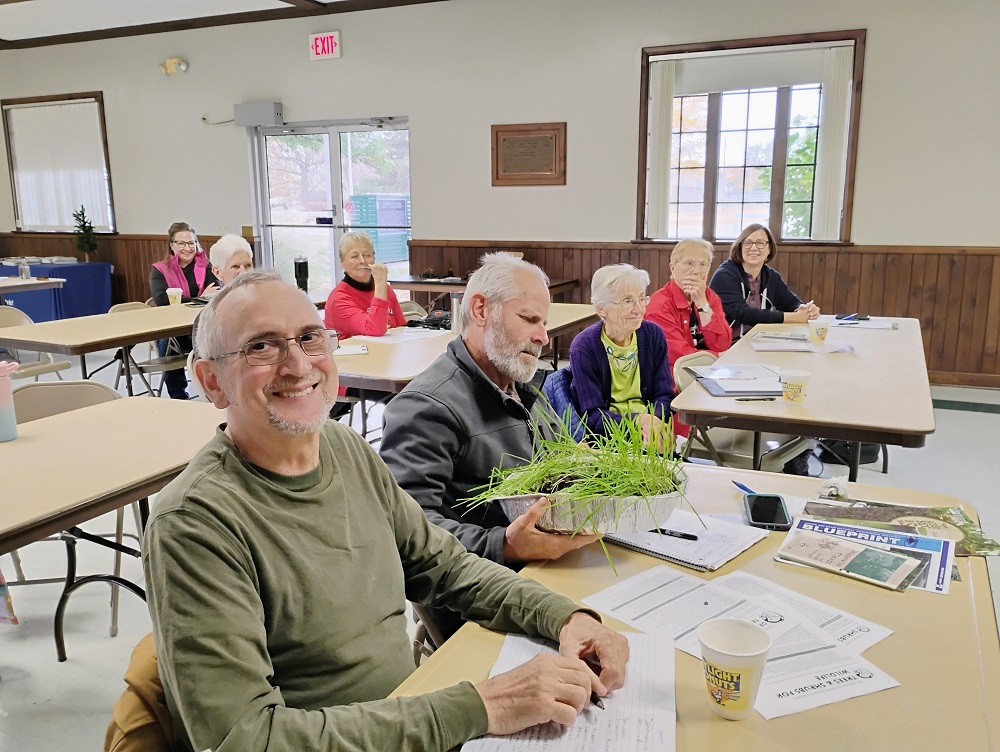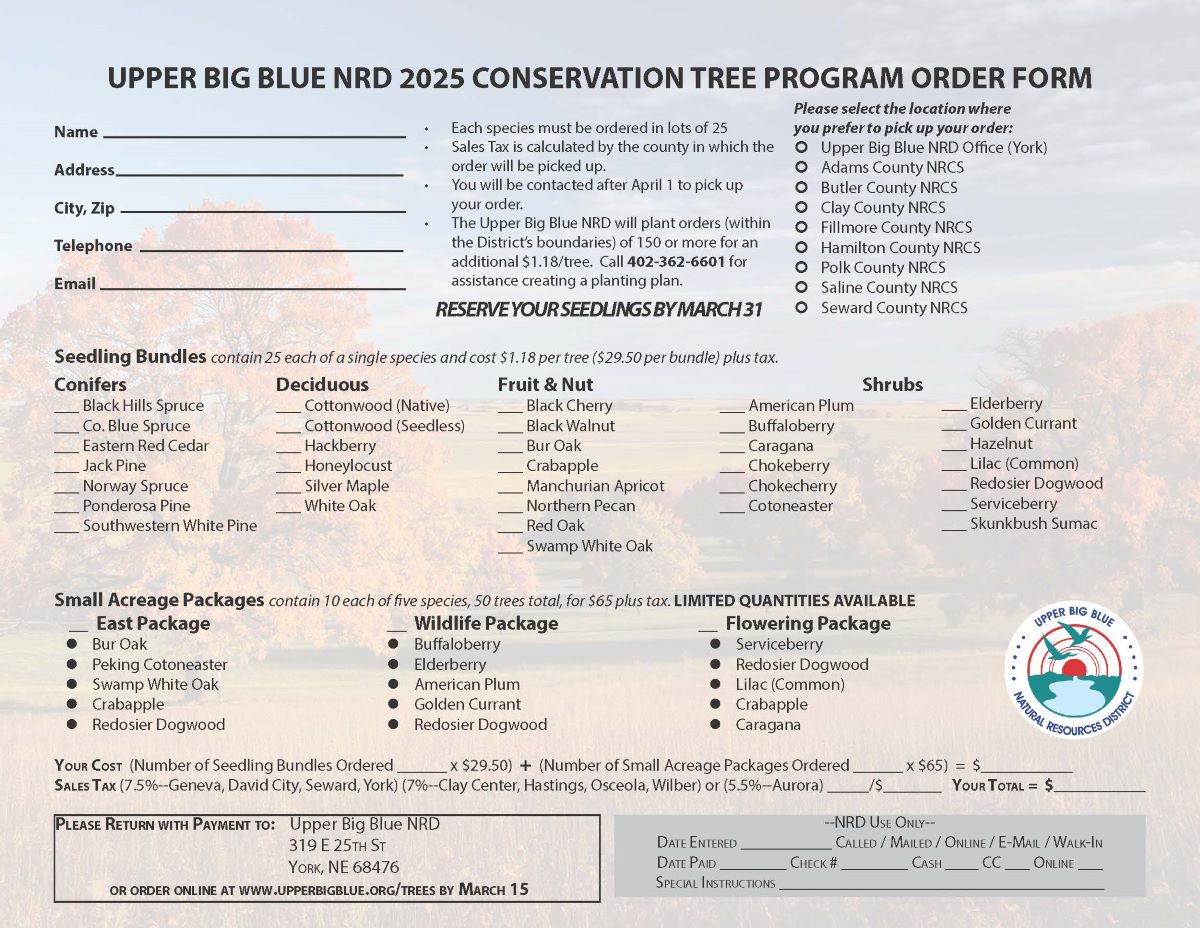GROWing Solutions
Fall garden event invites participants to reflect on past growing season and strategize for future
While New Years is usually the time people take stock and resolve to make changes, Nebraska Extension Educator Sarah Browning says the end of a growing season is a great time for this practice for your garden and home landscape. Browning presented “Solutions Gardening” at the Project GROW Fall Garden Workshop, hosted by the Upper Big Blue Natural Resources District on November 2. According to Browning, finding the “right plant, right place” combination is the key to successful gardens.
Browning’s presentation at the recent event was focused on flowers and bedding plants, while her previous presentations in spring 2023 and 2024 were focused on fruits trees and vegetable gardens.
Fall is a great time to look at your property and determine what went wrong, said Browning, who offered suggestions for plants that grow best in various conditions, from wet soil to drought-prone areas, and full sun to full shade. She also offered insight into preferred tree species for different scenarios and growing goals. While some gardeners are looking to increase wildlife habitat through their landscapes, planting pollinator-friendly blooms or berries to attract birds, some wildlife is less desirable. Browning discussed plant selection for when you’re looking to deter rabbits, deer, and other critters that might not be as welcome.
When it comes to great groundcovers for bare patches on your landscape, Browning recommended a few of her favorites including leadwort, prairie smoke, and Solomon’s seal. Browning’s presentation slides are available on the NRD’s website and contain useful information as well as QR codes and links to other resources.
Participants at the fall garden workshop also heard from Brach Johnson, urban conservationist with the Natural Resource Conservation Service (NRCS). Johnson discussed funding opportunities for urban and small-scale agriculture, from grants to technical assistance, that have helped individuals getting started with growing as well as schools or communities that want to increase their local food production opportunities. From raised beds to compost reactors, there are many “micro-practices” that would qualify for the program, as well as larger initiatives like a hoop house or high tunnel system, vertical growing system, or stormwater collection system. He also demonstrated how cover crops can benefit home gardens by improving soil and adding nutrients to the system.
According to Johnson, the average grocery store in the U.S. has a three-day supply of food and the average household has an eight-day supply. This is sufficient most of the time, but when there are supply chain disruptions, such as the ones caused by recent hurricanes in the south, it is helpful to have a robust local system of food production to combat food insecurity. Even when there aren’t natural disasters impacting supplies, there are many food deserts in the U.S., where fresh food is hard to access. Johnson discussed how communities could improve blighted areas or empty lots by repurposing them into innovative food production spaces.
Interested in learning more? You can reach out to Johnson at Brach.johnson@usda.gov or view his presentation slides on our website (click ‘workshop resources’).

Jay Seaton with the Nebraska Forest Service was also on hand at the workshop to answer questions about trees and to assist participants with species selection for specific needs. The NRD offers a Conservation Tree Program each year to provide low-cost, bulk tree seedlings, which are an inexpensive way to improve your property. Trees may be ordered from November 1 to March 31 and orders will be delivered in April, in time for spring planting. To learn more about this program, visit www.upperbigblue.org/trees.


